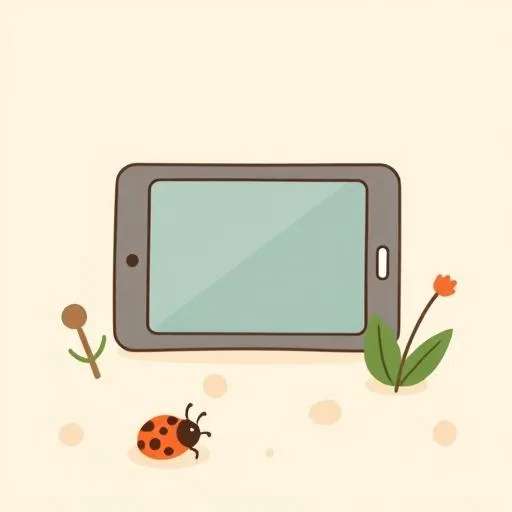
Amid all the buzz about our changing world, I keep coming back to what really matters for our little ones. Walking through the park this morning, I watched kids building stick forts and arguing good-naturedly about cloud shapes. Meanwhile, headlines buzz about talent reshaping cities—but what really caught my eye was how those shifts echo something deeper for us as parents. When experts note professionals flocking to bustling innovation hubs, it reminds us: the world our children navigate is transforming faster than we imagined. Yet beneath all the change, one truth holds steady—kids thrive not on keeping up with trends, but on roots that ground them and wings that let them explore. Let’s unpack what this means for raising resilient, curious humans.
When Cities Buzz, What Do Our Kids Need?

You’ve probably seen the reports: professionals are moving toward places where new ideas spark, reshaping neighborhoods with every arrival (CBRE notes a 50% surge in AI-skilled workers since 2024). But for parents, the real story isn’t about rent spikes or office spaces—it’s about the energy that floods communities when curious minds gather. You see, that spark of curiosity isn’t so different from what fuels innovation hubs. Think of your child’s playgroup suddenly discovering ladybugs on the playground. That collective wonder? It’s the same electricity lighting up these creative centers.
What struck me most is how AI’s still pretty new, kind of like another tech boom waiting to happen. As parents, we’re living our own early days with tiny humans who learn by doing, not by rushing. Just as every city needs green spaces to breathe, our kids need downtime to just be kids. When the world shouts about “future-proofing” children, remember: resilience isn’t built by predicting trends, but by helping them feel brave enough to handle whatever comes their way. Like letting them rearrange the living room ‘fort’ after rain washes it away—they learn to adapt without losing joy.
Curiosity: The Skill That Outlasts Every Trend

Ever noticed how kids find magic in the simplest things? Here’s the twist: while big companies are all chasing after AI experts (that ‘FIRE’ group—finance, insurance, real estate), our children’s most valuable asset can’t be hired or automated. It’s the messy, glorious habit of asking ‘why?’ Think of a child tracing sidewalk cracks after rain, wondering where the water goes. That instinct—to explore, not just consume—is their superpower.
Instead of worrying about “what they must learn,” try this: follow their lead. If they’re fascinated by how leaves change color, skip the textbook. Grab a bag, collect specimens, and ponder together. ‘What if we timed how long it takes for this maple leaf to dry?’ Real discovery happens in these moments: baking cookies to discuss fractions, or watching ants carry crumbs to talk about teamwork. As CBRE’s data reminds us, innovation thrives where people connect meaningfully—so does childhood learning. One rainy afternoon, we turned kitchen shelves into a ‘physics lab’ testing which containers hold the most spaghetti. (Turns out, wide jars win. Who knew?) It’s those silly, hands-on moments that stick with them—and us! The ‘lessons’ linger long after the noodles are gone.
Real World, Real Play: The Antidote to Digital Overload

You’ve heard ‘tech talent migration’ in the news, but our kids’ migration is different: from screens to sandboxes, tablets to treehouses. When bustling hubs see rental spikes because fintech demands new skills (per CBRE), it’s a mirror for us. Just as cities balance skyscrapers with green spaces, we must protect unplugged time where wonder happens organically.
That messy stick fort? It’s teaching more than any app: spatial reasoning, negotiation, storytelling. Balance doesn’t mean banning technology—it means framing it as one tool among many. Try ‘tech play’: use a camera app to document neighborhood birds, then sketch them offline. Or when your child asks how videos load so fast, explain ‘Like how we walk to the park—sometimes we take the long path to enjoy the journey!’ The goal isn’t to replace real-world magic but to honor it. Kids don’t need constant stimulation; they need breathers where imagination fills the quiet. (And yes, ‘boredom’ often births the best games—like ‘who can balance rocks longest’ during a park stroll.)
Raising Resilient Explorers for Tomorrow’s Unknowns

Experts say AI is “still relatively early days,” which sounds thrilling—and terrifying—for parents. But remember: childhood isn’t about preparing for a specific future. It’s about building inner compasses that work in any storm. Resilience grows when kids experience small frustrations: a puzzle piece that won’t fit, a tower of blocks toppling. That’s not failure; it’s practice for life’s inevitable wobbles.
When financial services scramble to “up their game” (as the reports mention), it’s easy to panic about ‘keeping up.’ Yet our children’s strength comes from knowing they’re seen, not from perfect skills. Next time they’re stuck, try: ‘What did you learn from trying?’ instead of rushing to fix it. Celebrate their persistence—like applauding their shaky attempt to ride a bike without training wheels, even if they wobble. Communities thrive on human connection, not just talent pools (CBRE’s right there!). So host a neighborhood ‘idea swap’: kids trade drawings of their dream inventions, no ‘right answers’ allowed. Their resilience isn’t built in a day—it’s in those small, messy tries that shape who they become.
Source: AI tech talent is juicing these real estate markets, CNBC, 2025/09/09
